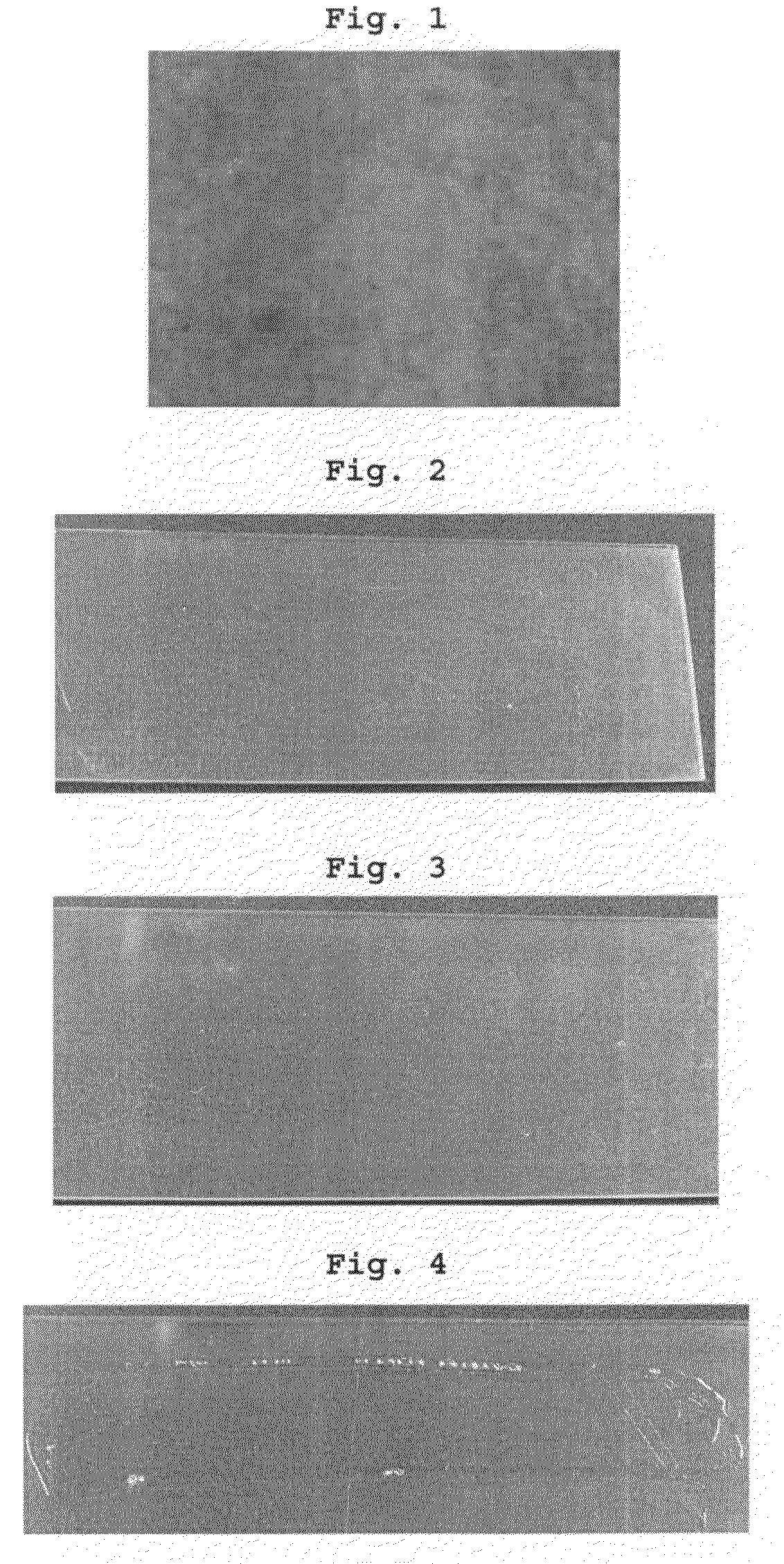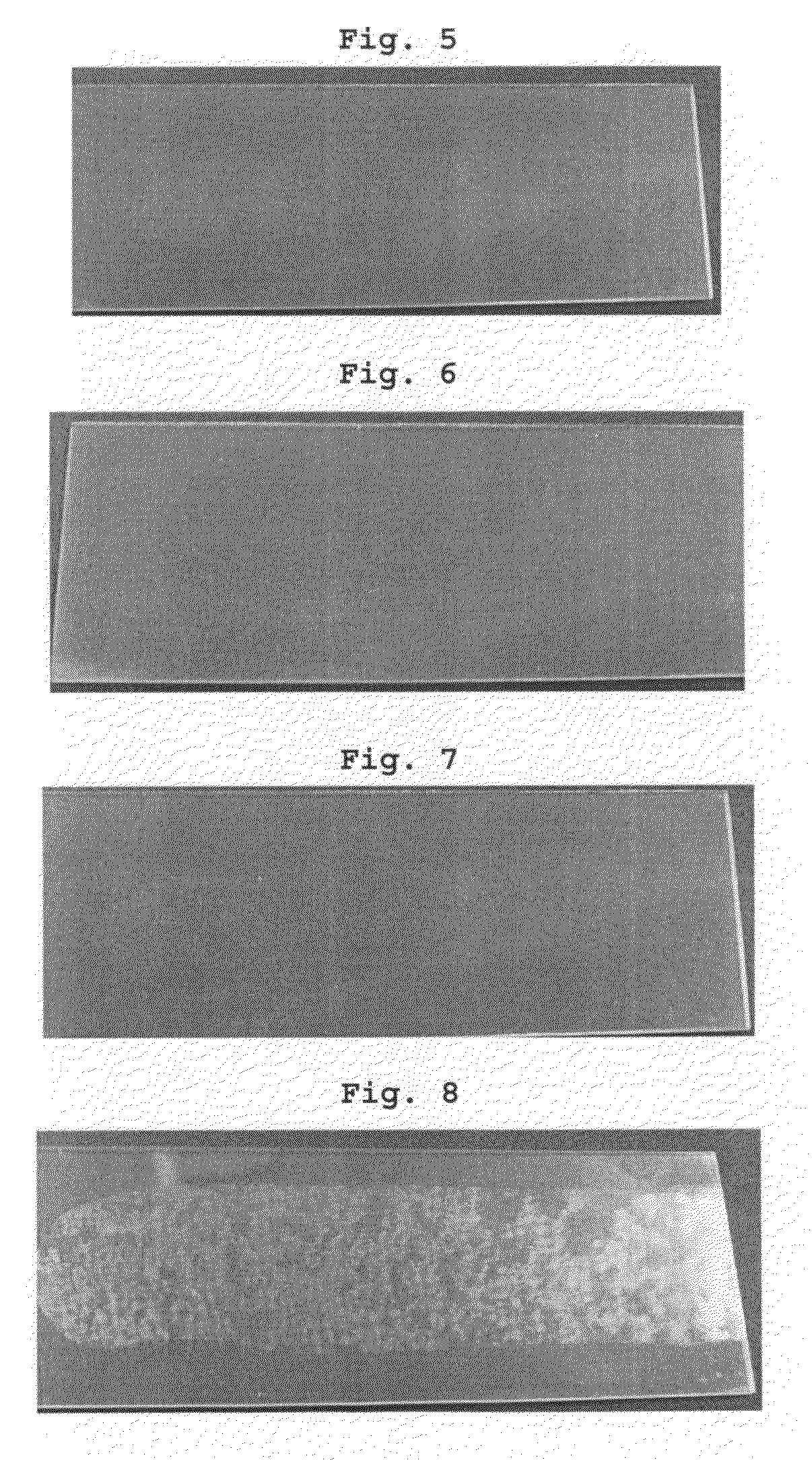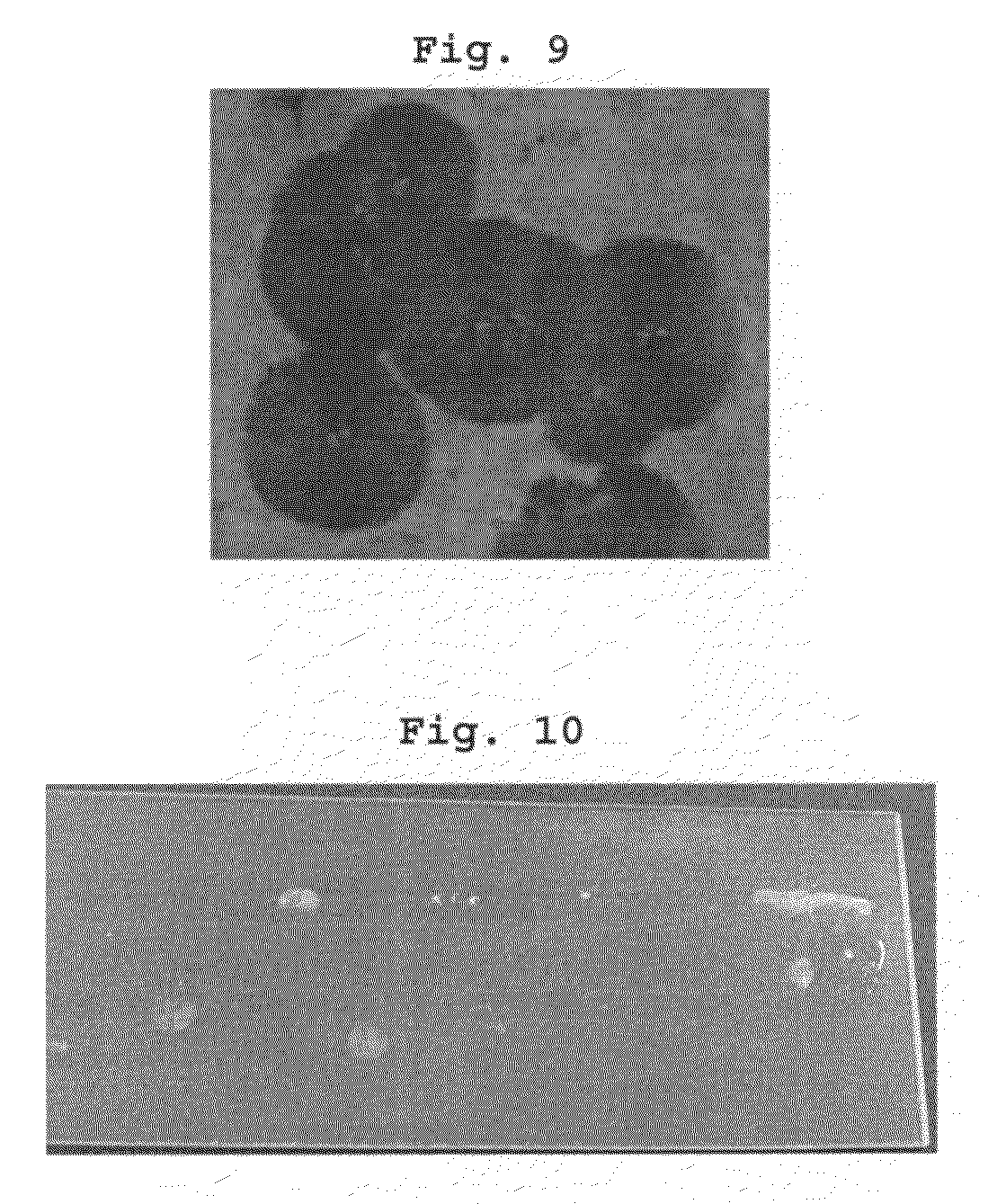Optically anisotropic compound and resin composition comprising the same
a technology of anisotropic compound and resin composition, which is applied in the preparation of organic compounds, chemical/physical processes, liquid crystal compositions, etc., can solve the problems of uniform dispersibility, adversely affecting signal reading, and changing other physical properties of polymer resin, and achieve high optical anisotropy and compatibility with polymer resin
- Summary
- Abstract
- Description
- Claims
- Application Information
AI Technical Summary
Benefits of technology
Problems solved by technology
Method used
Image
Examples
example 2
[0074]
[0075]1.0 equivalent of a compound 1 was dissolved in a mixed solvent (ethanol:water=7:3), and 1.0 equivalent of 2-ethylhexyl-1-bromide (5) and 2.2 equivalents of KOH were added, and the reactant mixture was stirred at 90□ for 10 hours. Then, ethanol was completely removed by distillation under reduced pressure, and water was additionally added. 10% HCl(aq) was gradually added thereto to adjust pH to 1 to 3 and then to obtain alkoxybenzoic acid at a yield of 90% or more.
[0076]1.0 equivalent of the benzoic acid compound and 1.0 equivalent of a compound 3 were dissolved in CH2Cl2. Then, 1.2 equivalents of EDC and 0.1 equivalents of DMAP were added thereto, and stirred at room temperature for 10 hours. Then, the mixture was worked up with CH2Cl2 and purified via silica gel to obtain a final compound 6 at a yield of 85% or more. 1H NMR of the compound 6 is as follows.
[0077]1HNMR (400 MHz, CDCl3): δ 0.90˜0.97 (m, 6H) , 1.29˜1.38 (m, 4H), 1.38˜1.61 (m, 4H), 1.69˜1.81 (m, 1H), 3.94 (...
example 3
[0078]
[0079]1.0 equivalent of a compound 7 and 1.0 equivalent of a compound 8 were dissolved in a mixed solvent (Dioxane: DMF=9:1), and 2.0 equivalents of Cs2CO3, 0.1 equivalents of CuI, and 0.1 equivalents of 1,1,1-tris(hydroxymethyl)ethane were added, and the reactant mixture was stirred at 110□ for 20 hours. Then, the mixture was worked up with ether and water and purified via silica gel to obtain a compound 9 at a yield of 90%. 1HNMR of the compound 9 is as follows.
[0080]1HNMR (400 MHz, CDCl3): δ 0.93 (t, 3H), 1.48˜1.63 (m, 2H), 2.30(t, 3H), 7.02˜7.53 (m, 6H), 7.65 (d, 2H), 7.69˜7.74 (m, 4H).
example 4
[0081]
[0082]1.0 equivalent of a compound 9 was dissolved in a CH2Cl2 solvent, and 2.2 equivalents of m-CPBA (m-chloroperbenzoic acid) was gradually added at 0□, and the reactant mixture was stirred at room temperature for 30 minutes. Then, the mixture was worked up, and purified via silica gel to obtain a compound 10 at a yield of 80%. Herein, when 1.0 equivalent of m-CPBA, instead of 2.2 equivalents of m-CPBA, is used, a sulfoxide compound 11 may be obtained. 1HNMR of the compound 10 is as follows.
[0083]1HNMR (400 MHz, CDCl3): δ 0.93 (t, 3H), 1.48˜1.63 (m, 2H), 2.30 (t, 3H), 7.18˜7.22 (m, 2H), 7.63 (d, 2H), 7.65˜7.70 (m, 4H), 7.99˜8.05 (m, 4H).
PUM
| Property | Measurement | Unit |
|---|---|---|
| refractive anisotropy | aaaaa | aaaaa |
| weight ratio | aaaaa | aaaaa |
| compatibility | aaaaa | aaaaa |
Abstract
Description
Claims
Application Information
 Login to View More
Login to View More - R&D
- Intellectual Property
- Life Sciences
- Materials
- Tech Scout
- Unparalleled Data Quality
- Higher Quality Content
- 60% Fewer Hallucinations
Browse by: Latest US Patents, China's latest patents, Technical Efficacy Thesaurus, Application Domain, Technology Topic, Popular Technical Reports.
© 2025 PatSnap. All rights reserved.Legal|Privacy policy|Modern Slavery Act Transparency Statement|Sitemap|About US| Contact US: help@patsnap.com



